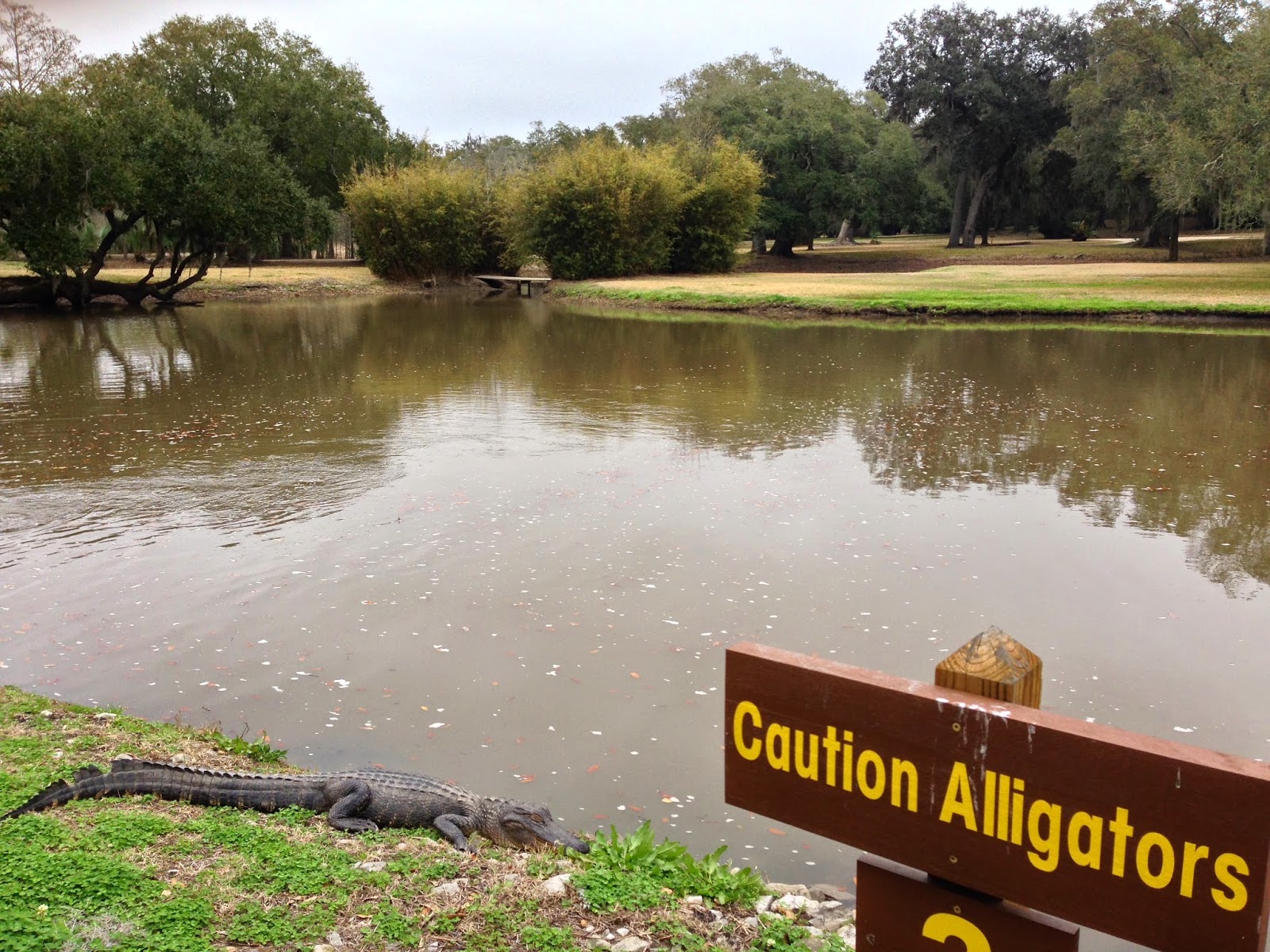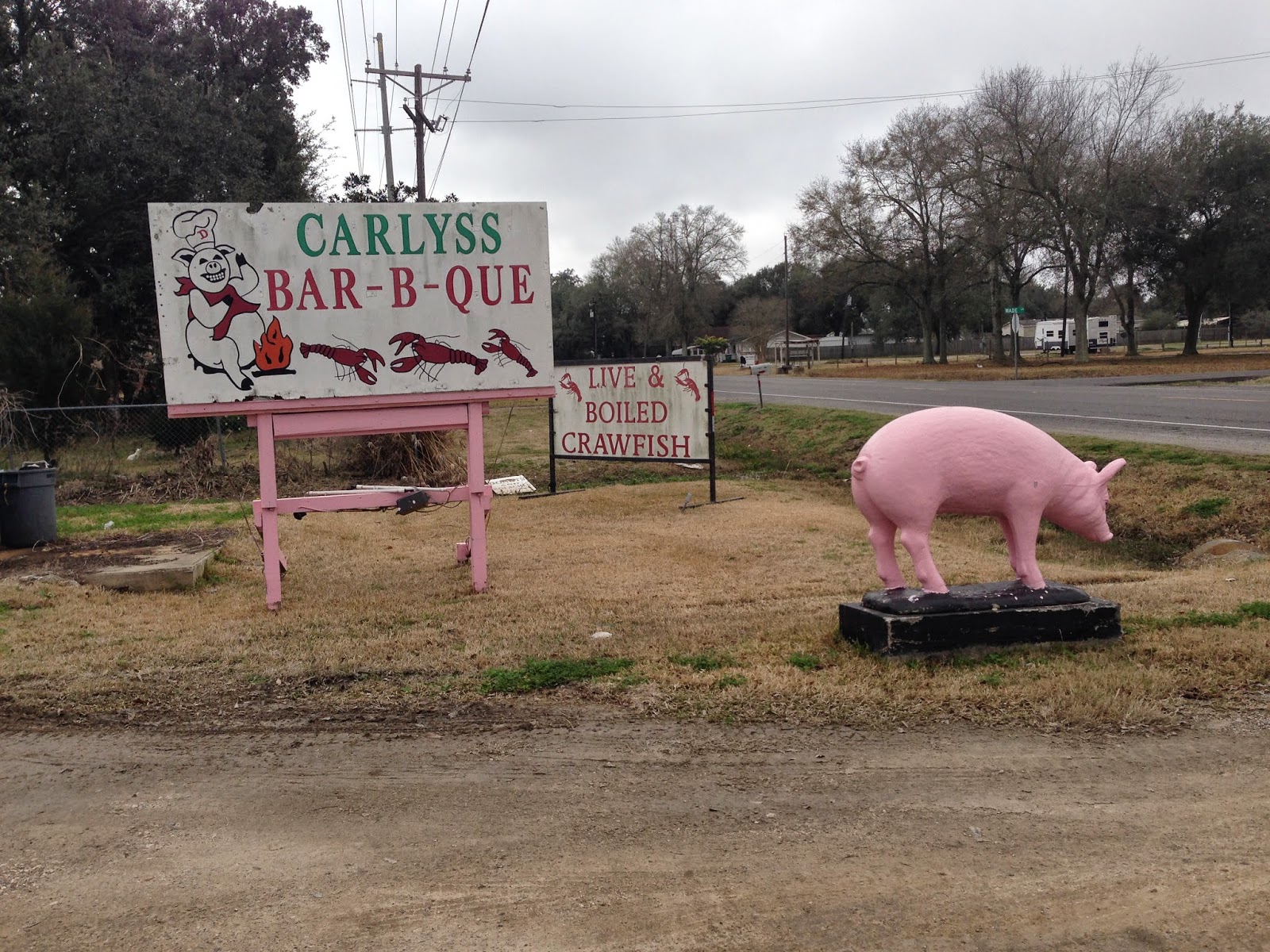All sleep; snores
permeate our lodging. Last night brought a thunderstorm with terrific rain.
Keith woke briefly, concerned about the crackly sound. The imp of perversity appeared in the bedroom
corner, her eyes glowing with scarcely concealed merriment. “Tell him that the
world is ending,” she whispered, egging me on. With great difficulty, I
resisted her tempting, delicious charm.
To Bear, I responded only, “Rain, my love.” My behavior disgusted the
imp, prompting her to scowl, disappearing with a foot stomp and an angry snort.
This Airbnb, not
the best we’ve rented, lacks cookware and a functioning microwave. Grillwork
covers every window. Come a house fire, we’re dead cooked meat. Our host asked
us to close the blinds last night as “people could see in”. I’m not exactly sure
why we should care that people could see in.
New Orleans and her residents seemed braced, anticipating a siege,
perhaps appropriately, considering the impending drunken orgy of Mardi Gras. As
we learned yesterday, anything not battened down and securely shuttered will be
puked upon or stolen, perhaps both.
The torrent
continues all morning. Bloodroot and Barkley finally rise. The sky cries in endless, lingering streams.
We leave the house around 11:45 AM. Our
agenda for today includes exploring the Garden District and a touristy Mississippi
River boat ride on a steam paddleboat, naturally. We plan to step into Samuel Clemens’s world.
Bloodroot calls the boat place to make sure they accommodate cripples.
“Definitely, sir,” they respond, “on the top deck only. We don’t allow cripples
downstairs.” So there I would be in my wheelchair, out in the storm, jumping as
Sven’s batteries short out.
Given the
persistent, ceaseless deluge, we decide to stop by the New Orleans Museum of
Art (NOMA) for just an hour. We read about an intriguing Civil War photography
exhibit. We’ll limit our visit to an hour, wait for the storm to subside, then
pick up the paddleboat tour. Who are we kidding here? Does the rain shower fill
our heads with water, swishing our thinking about like the spin cycle of a
washing machine? We spent 15 hours at
the Louvre!
(Once, long ago, Bloodroot
and I did spend only an hour touring a Potato Museum in Blackfoot, Idaho. I recall a glass case displaying the world’s
largest potato chip, unfortunately broken.)
Ignoring hindsight,
we shell out big bucks for an Art Museum ($60) and walk upstairs to visit the
Civil War photographs. The exhibit rocks!
We wander through myriad extant tintypes, the medium surprisingly
durable. The Civil War brought photography and made it affordable to the
masses. People embraced the new technology believing that the photos would
protect their loved ones. Relatives back home wore small tintype lockets as
talismans. As Arthur C Clarke said, “any sufficiently advanced technology is
indistinguishable from magic.”
The war produced a
previously unthinkable number of casualties-unclaimed, anonymous bodies
decomposing in a field or hastily buried somewhere. After the war, the federal
government reburied dead combatants classifying over half “unknown”, inspiring
the dogtags still used by the military today. A missing soldier could walk in
the front door two or three years after a battle, the suspense keeping hopes
alive and talismans treasured.
We also see photos
of scarred backs, shackled children, and other mute but grim testaments to the
horrors of slavery.
The Civil War,
considered the first modern war, used new and advanced killing machines
including repeating rifles (seven shots before reloading), Gatling (machine)
guns, deadlier, longer-range, more accurate bullets (Minie balls) and railroads
to supply everything. Unfortunately, expertise keeping soldiers alive lagged
behind the military’s new lethal capacities. Eventually battlefield care of the
injured improved, as people invented ambulances and developed better surgery.
We see a surgical primer. Is it gross? Certainly, but still represents a major
step forward from what had been before.
After the war came
Lincoln’s assassination. People expected
posters and photos of the conspirators; the government scrambled to oblige. “Hey, Booth died in a barn fire, he wasn’t
hanged, was he?” The family thinks, the family puzzles, stirring their
collective vague memories of history education. Keith reads the bottom half of
the blurb next to the wanted poster – yes, Booth wouldn’t surrender, so the
Feds set fire to the barn he hid in. At one point in my life, I would’ve read
quickly everything in this museum. Now, my multiple lenses slow me considerably
and I find that I skip a great deal.
This allows me to ask unintelligent questions with obvious answers.
Even now, Booth’s near
success rattles me. He and his co-conspirators planned to take out the federal
government targeting Lincoln, Vice President Andrew Johnson, and Secretary of
State William Seward. The war would
still have been lost, having slipped far beyond the South’s grasp, but what
evil the conspirators could have wrought!
At 1:45 PM,
Bloodroot mentions that we should mosey on over to the boat, herding us toward
the museum’s door. Opening the door, the
downpour nearly drowns us. We dodge the endless
cascade, scurrying back into the museum.
The boys opine, “Forget the boat!
The NOMA is way more interesting.” We choose to indulge in a leisurely
lunch. Following our relaxing meal, Bloodroot
orders a cookie and a glass of wine. He devours his treats, all the while
labelling us decadent. Rising, we
explore the museum’s small but nice regular collection featuring a few works by
Monet, Miro, Picasso, and Degas. Rounding a corner, we discover the museum’s
famous Mel Chin artwork. The two-story bomb-shaped
bamboo sculpture hangs in the main atrium, the only space large enough to hold
it. Called Our Strange Flower of Democracy, the piece solemnly reminds us that
the Athenian democracy (the very first) sentenced Socrates to death in 399 BC.
Long before we’re
ready, the museum surprises us by closing.
This seems to be the story of our collective lives. We evaluate our options. After some
discussion, we decide to explore the Garden District. Bloodroot drives around
for a good bit, Barkley directing. Finally we park, exit Pearl, and begin
walking. Not much really to report. Perhaps more blooms later in the spring.
Barkley and
Bloodroot decide they want to live in New Orleans, for hipness and cool houses. They plan to locate their new corporation
here, Napoleonic code notwithstanding.
“Don’t worry, Mom,” they say, “We’ll definitely avoid the French Quarter.”
As a dutiful,
concerned parent, I provide objections:
1) This place is beneath sea level.
2) June through September are god-awful hot.
3) You’re downstream of much of the country’s
pollution – from the old steel in Pittsburgh to every factory and farm in the
Mississippi watershed, not to mention the petrochemical factories.
The boys drop the
New Orleans headquarters idea. I must
admit I don’t know if they buy my stupendous counsel or simply tire of arguing.
Bloodroot drives
past Tulane and Loyola Universities, both adorned by graceful old buildings and
massive oak trees. Near the universities, we see old houses, long and narrow,
like doublewides turned sideways. We
head home.
Once back at the
ranch, the boys cook. We discuss the
trip over dinner. What does each of us
hope to see?
Bear: Carlsbad, Big Bend, Vicksburg and Chalmette
battlefields.
Bloodroot: Sinkholes and Big Bend.
Barkley: Sinkholes, Vicksburg, plantations and the
George Bush Center.
Beaver: Laura Plantation.
We turn in
early. Tomorrow, we drive out to the
Laura Plantation, my sole manifest desire in this month long odyssey. “Odyssey, that’s me,” murmurs Pearl sleepily. “Goodnight Pearl!” we reply in unison. After all, we remember while tumbling into the
oblivion of sleep, tomorrow is another day.[1]
























